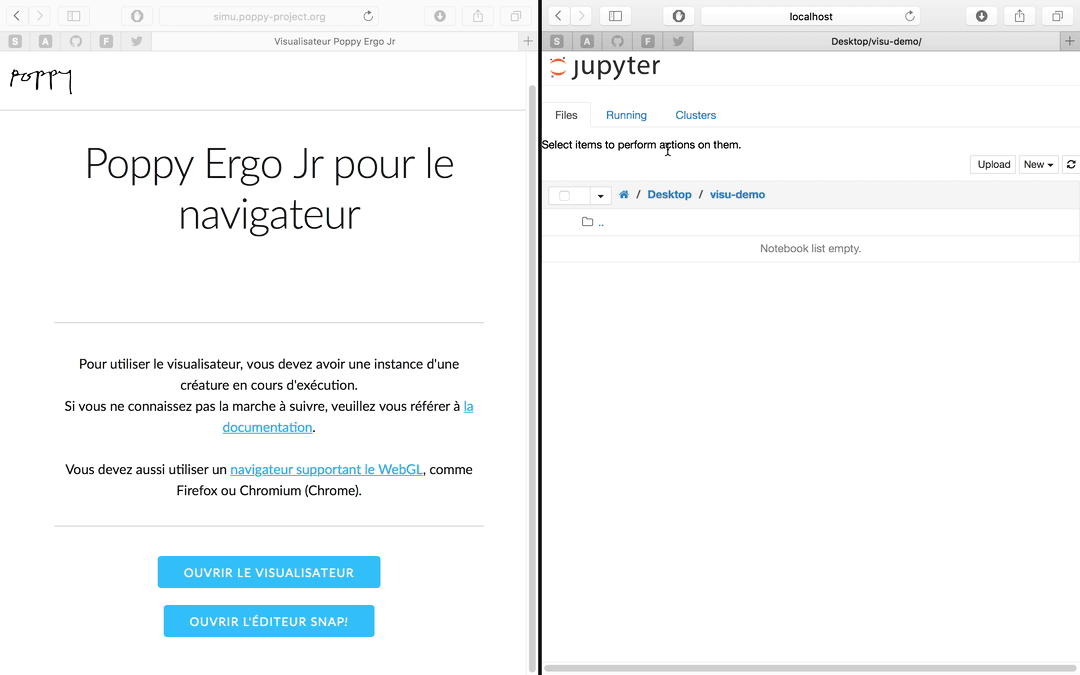Visualize Poppy creatures in the browser.
Warning: even if its goal is to work with every Poppy robots, at the moment it only works with Poppy Ergo Jr.
The viewer is in a web browser. Yet, you still need to install software on your computer that will run the robot.
First you need to install Python, if you don't have any knowledge in scientific Python we strongly recommend to use a pre-packaged distribution such as Anaconda.
Then, you have to install the creature software. For Poppy Ergo Jr robot you need to install the poppy-ergo-jr package (the easiest way is with pip install poppy-ergo-jr).
For more informations, refer to the Poppy documentation.
If you have installed everything correctly, you can control from Snap! with
poppy-services --poppy-simu --snap poppy-ergo-jrOr in Python with
from pypot.creatures import PoppyErgoJr
robot = PoppyErgoJr(simulator='poppy-simu')An online version is available at http://simu.poppy-project.org.
This is the recommended way to use it, as it does not require any other installation on your side.
You can download it locally from the gh-pages branch archive.
This setup requires a running webserver.
For instance, using Python:
cd /path/to/poppy-simu-gh-pages/
python -m SimpleHTTPServerYou can open the website with the URL http://127.0.0.1:8000 on your web browser.
This is not the way you should choose unless you need to modify the poppy-simu website code.
You have to clone the git repository and build it with Jekyll.
git clone https://github.com/poppy-project/poppy-simu.git && cd poppy-simu
gem install bundler
bundle install
bundle exec jekyll serveYou need support? The Poppy forum is the right place to ask for help!
You can share your experience, new design, ideas or questions on the Poppy project forum.
To contribute to this repository, you can fork it and propose a pull request (Another useful link)
See LICENSE file.
The Poppy project is born in 2012 in the Flowers laboratory at Inria Bordeaux Sud-Ouest. It was initiated during Matthieu Lapeyre's PhD Thesis supervised by Pierre Yves Oudeyer. At the beginning, the development team was composed by Matthieu Lapeyre (mechanics & design), Pierre Rouanet (software) and Jonathan Grizou (electronics).
This project is initially a fundamental research project financed by ERC Grant Explorer to explore the role of embodiment and morphology properties on cognition and especially on the learning of sensori-motor tasks.
